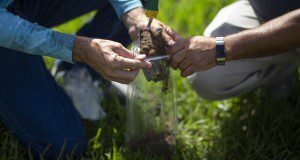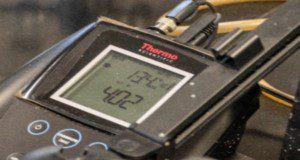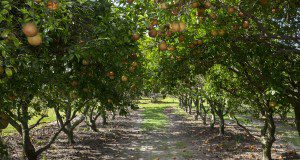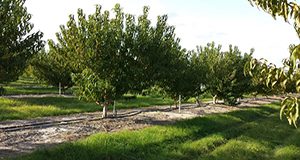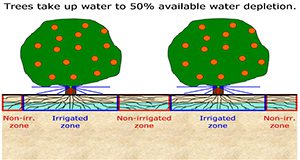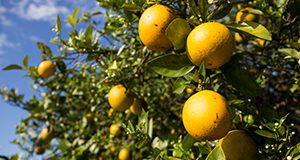To achieve optimal grove nutrition, citrus growers must test grove soil before beginning any fertilization program. Standard procedures for sampling, preparing, and analyzing soil should be followed for meaningful interpretations of the test results and accurate recommendations. This new two-page fact sheet, published by the UF/IFAS Department of Soil and Water Sciences, provides illustrated soil sampling procedures and tables to aid in basic interpretation of lab results. Written by Davie Kadyampakeni, Kelly Morgan, Arnold Schumann, and Rhuanito S. Ferrarezi.
https://edis.ifas.ufl.edu/ss667
Tag: Kelly Morgan
Citrus Soil pH Testing Procedures
Maintaining the correct soil pH is essential to ensure optimal plant growth and crop yield. This new two-page document is an instructional sheet for citrus soil pH testing, written by Kelly Morgan and published by the UF/IFAS Department of Soil and Water Sciences.
https://edis.ifas.ufl.edu/ss665
Citrus Soil pH Management
Management of both soil pH and nutrients is required to maintain soil fertility levels and ensure economic agricultural production. Maintaining soil in the 6.0-6.5 pH range is best for most crops including citrus. This new two-page publication of the UF/IFAS Department of Soil and Water Sciences, written by Kelly Morgan, explains the effects of soil pH on citrus as well as options for management.
https://edis.ifas.ufl.edu/ss666
Irrigation Practices for Peaches in Florida
This 6-page document provides basic information and guidelines on water requirements and irrigation strategies for peaches grown in Florida. Written by C. Zambrano-Vaca, L. Zotarelli, K. Migliaccio, R. Beeson Jr., K. Morgan, J. Chaparro, and M. Olmstead and published by the UF/IFAS Horticultural Sciences Department, April 2018.
http://edis.ifas.ufl.edu/hs1316
Irrigation Management of HLB-Affected Trees
Water is a limiting factor in Florida citrus production due to non-uniform rainfall distribution and the low water-holding capacity of our sandy soils. Because periods of low rainfall coincide with critical stages of citrus production, additional irrigation is necessary to reduce the negative effects of water stress. This 6-page document covers recent findings on water use of trees affected by citrus greening and the impact this would have on irrigation management considerations. Written by Davie Kadyampakeni, Kelly Morgan, Mongi Zekri, Rhuanito Ferrarezi, Arnold Schumann, and Thomas A. Obreza and published by the UF/IFAS Department of Soil and Water Sciences, October 2017.
http://edis.ifas.ufl.edu/ss659
Citrus Irrigation Management
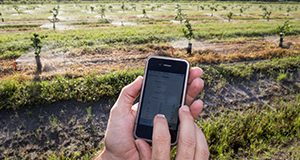 The chapter on irrigation management of citrus is largely taken from guidelines provided in SL253 on trees prior to Huanglongbing (HLB) prevalent conditions. A section has been added to cover recent findings on water use of trees affected by HLB and the impact this would have on the irrigation management considerations. This 6-page fact sheet discusses water supply, allowable soil water depletion, irrigation scheduling, soil moisture measurement, water budgeting, smartphone apps, irrigation strategies to improve nutrient uptake and reduce leaching, and irrigation management considerations for HLB-affected trees. Written by Davie Kadyampakeni, Kelly Morgan, Mongi Zekri, Rhuanito Ferrarezi, Arnold Schumann, and Thomas Obreza, and published by the UF/IFAS Soil and Water Sciences Department, September 2017.
The chapter on irrigation management of citrus is largely taken from guidelines provided in SL253 on trees prior to Huanglongbing (HLB) prevalent conditions. A section has been added to cover recent findings on water use of trees affected by HLB and the impact this would have on the irrigation management considerations. This 6-page fact sheet discusses water supply, allowable soil water depletion, irrigation scheduling, soil moisture measurement, water budgeting, smartphone apps, irrigation strategies to improve nutrient uptake and reduce leaching, and irrigation management considerations for HLB-affected trees. Written by Davie Kadyampakeni, Kelly Morgan, Mongi Zekri, Rhuanito Ferrarezi, Arnold Schumann, and Thomas Obreza, and published by the UF/IFAS Soil and Water Sciences Department, September 2017.
http://edis.ifas.ufl.edu/ss660
Fertigation for Citrus Trees
Microirrigation is an important component of citrus production systems in Florida. For citrus trees, microirrigation is more desirable than other irrigation methods for several reasons: water conservation, fertilizer management efficiency, and freeze protection. Research has shown that when microirrigation systems are properly managed, water savings can amount to as much as 80% compared with subirrigation and 50% compared with overhead sprinkler irrigation. Research has also shown the important advantage of microsprinklers for freeze protection of citrus. This 4-page fact sheet discusses fertilizer solubility and some common fertigation materials. It also offers a fertigation summary. Written by Mongi Zekri, Arnold Schumann, Tripti Vashisth, Davie Kadyampakeni, Kelly Morgan, Brian Boman, and Tom Obreza, and published by the UF Horticultural Sciences Department, September 2017.
http://edis.ifas.ufl.edu/hs1306
Implementing the Four Rs (4Rs) in Nutrient Stewardship for Tomato Production
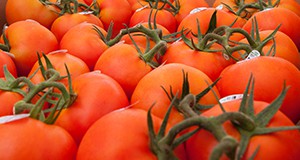 Fertilization plays a critical role in tomato production across the state of Florida. However, appropriate fertilization management depends on four major components (4Rs): right source, right rate, right placement, and right timing. Farming practices that follow the 4Rs can provide nutrients for optimal tomato productivity while minimizing the risk of nutrient losses and adverse environmental effects, both of which are important to the development of agricultural sustainability. This 6-page fact sheet discusses the 4Rs as well as conventional dry source fertilizers, controlled-release or slow-release source fertilizers, and liquid source fertilizers. Written by Qingren Wang, Guodong Liu, Kelly Morgan, and Yuncong Li, and published by the UF Department of Horticultural Sciences, October 2015.
Fertilization plays a critical role in tomato production across the state of Florida. However, appropriate fertilization management depends on four major components (4Rs): right source, right rate, right placement, and right timing. Farming practices that follow the 4Rs can provide nutrients for optimal tomato productivity while minimizing the risk of nutrient losses and adverse environmental effects, both of which are important to the development of agricultural sustainability. This 6-page fact sheet discusses the 4Rs as well as conventional dry source fertilizers, controlled-release or slow-release source fertilizers, and liquid source fertilizers. Written by Qingren Wang, Guodong Liu, Kelly Morgan, and Yuncong Li, and published by the UF Department of Horticultural Sciences, October 2015.
http://edis.ifas.ufl.edu/hs1269
What is 4R nutrient stewardship?
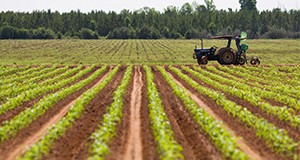
A new and innovative approach to Best Management Practices for fertilizer application known as 4R nutrient stewardship is available, to ensure the environmental, social, and economical sustainability of commercial crop production. This 3-page fact sheet focuses on the basic concepts of the 4R nutrient stewardship principles for commercial crop production. Written by Guodong Liu, Kelly Morgan, Yuncong Li, Lincoln Zotarelli, James DeValerio, and Qingren Wang, and published by the UF Department of Horticultural Sciences, July 2015.
http://edis.ifas.ufl.edu/hs1264
SmartIrrigation Avocado App: A Step-by-Step Guide
 UF’s SmartIrrigation Avocado for iOS and Android platforms provides a simple ET-based method to schedule irrigation and is expected to provide 20% to 50% water savings based on findings with other schedule tools. This 6-page fact sheet provides configuration instructions and main menu features. Written by D. Mbabazi, K. W. Migliaccio, J. H. Crane, J. H. Debastiani Andreis, C. Fraisse, L. Zotarelli, and K. T. Morgan, and published by the UF Department of Agricultural and Biological Engineering, May 2015.
UF’s SmartIrrigation Avocado for iOS and Android platforms provides a simple ET-based method to schedule irrigation and is expected to provide 20% to 50% water savings based on findings with other schedule tools. This 6-page fact sheet provides configuration instructions and main menu features. Written by D. Mbabazi, K. W. Migliaccio, J. H. Crane, J. H. Debastiani Andreis, C. Fraisse, L. Zotarelli, and K. T. Morgan, and published by the UF Department of Agricultural and Biological Engineering, May 2015.
http://edis.ifas.ufl.edu/ae513
Effects of Harvest Method on Microclimate in Florida Sugarcane
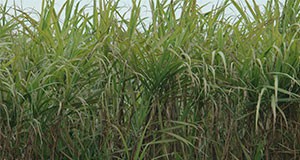 The production systems for sugarcane include either green cane or burnt cane harvesting operations. Sugarcane in Florida is typically harvested with burnt cane mechanical harvesting, but there is a growing interest to better understand the effects of green cane harvest residue “trash blankets” on microclimate conditions for sugarcane growing on both organic and mineral soils of Florida, so the authors conducted a three-year study to determine the effects of each harvest method on microclimate within the surface soil profile and at a 10 cm height from the soil surface. Results are presented in this 4-page fact sheet written by Hardev Sandhu, Maninder Singh, Robert Gilbert, Kelly Morgan, Ronald Rice, Leslie Baucum, James Shine Jr., and Mike Irey, and published by the UF Department of Agronomy, April 2015. (UF/IFAS Photo: Josh Wickham.)
The production systems for sugarcane include either green cane or burnt cane harvesting operations. Sugarcane in Florida is typically harvested with burnt cane mechanical harvesting, but there is a growing interest to better understand the effects of green cane harvest residue “trash blankets” on microclimate conditions for sugarcane growing on both organic and mineral soils of Florida, so the authors conducted a three-year study to determine the effects of each harvest method on microclimate within the surface soil profile and at a 10 cm height from the soil surface. Results are presented in this 4-page fact sheet written by Hardev Sandhu, Maninder Singh, Robert Gilbert, Kelly Morgan, Ronald Rice, Leslie Baucum, James Shine Jr., and Mike Irey, and published by the UF Department of Agronomy, April 2015. (UF/IFAS Photo: Josh Wickham.)
http://edis.ifas.ufl.edu/sc100
Nutrient Management of Vegetable and Agronomic Row Crops Handbook
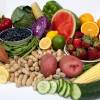 Through the implementation of a series of targeted cultural practices discussed in this production guide, growers should be able to reconcile economic profitability and responsible use of water and fertilizer. Topics include: proper sampling practices and test interpretations; irrigation management methods and automation; use of alternate fertilizer materials to retain nutrients in the soil but allow adequate supply for crop uptake. Use of these BMPs ensures that adequate fertilizer rates may be achieved by combinations of UF/IFAS recommended base rates and supplemental fertilizer applications. This 199-page handbook was edited by Kelly T. Morgan, and published by the UF Department of Soil and Water Science, February 2015.
Through the implementation of a series of targeted cultural practices discussed in this production guide, growers should be able to reconcile economic profitability and responsible use of water and fertilizer. Topics include: proper sampling practices and test interpretations; irrigation management methods and automation; use of alternate fertilizer materials to retain nutrients in the soil but allow adequate supply for crop uptake. Use of these BMPs ensures that adequate fertilizer rates may be achieved by combinations of UF/IFAS recommended base rates and supplemental fertilizer applications. This 199-page handbook was edited by Kelly T. Morgan, and published by the UF Department of Soil and Water Science, February 2015.
http://edis.ifas.ufl.edu/ss639
Factors Affecting the Choice of Irrigation Systems for Florida Tomato Production
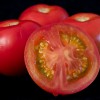 Several economic factors should be considered in selecting an agricultural irrigation system. This 7-page fact sheet compares two widely used irrigation systems for tomato production: seepage and sub-surface drip irrigation. Written by Jenna Rogers, Tatiana Borisova, Jeffrey Ullman, Kelly Morgan, Lincoln Zotarelli, and Kelly Grogan, and published by the UF Department of Food and Resource Economics, October 2014. (UF/IFAS Photo: Tyler Jones)
Several economic factors should be considered in selecting an agricultural irrigation system. This 7-page fact sheet compares two widely used irrigation systems for tomato production: seepage and sub-surface drip irrigation. Written by Jenna Rogers, Tatiana Borisova, Jeffrey Ullman, Kelly Morgan, Lincoln Zotarelli, and Kelly Grogan, and published by the UF Department of Food and Resource Economics, October 2014. (UF/IFAS Photo: Tyler Jones)
http://edis.ifas.ufl.edu/fe960
Costs and Benefits of More Efficient Irrigation Systems for Florida Chipping Potato Production
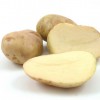 The goal of this 11-page fact sheet is to help producers and other interested parties understand how alternative irrigation systems can affect economic outcomes in agricultural operations. We used chipping potato production in the Hastings area in northeast Florida as an example to discuss factors to consider when selecting an irrigation system. Written by Jenna Rogers, Tatiana Borisova, Lincoln Zotarelli, Kelly Grogan, Jeffrey Ullman, Jessica Bertine, and Kelly Morgan, and published by the UF Department of Food and Resource Economics, September 2014.
The goal of this 11-page fact sheet is to help producers and other interested parties understand how alternative irrigation systems can affect economic outcomes in agricultural operations. We used chipping potato production in the Hastings area in northeast Florida as an example to discuss factors to consider when selecting an irrigation system. Written by Jenna Rogers, Tatiana Borisova, Lincoln Zotarelli, Kelly Grogan, Jeffrey Ullman, Jessica Bertine, and Kelly Morgan, and published by the UF Department of Food and Resource Economics, September 2014.
http://edis.ifas.ufl.edu/fe953
Extraction of Soil Nutrients Using Mehlich-3 Reagent for Acid-Mineral Soils of Florida
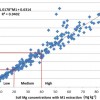 Soil testing is a multistep process starting with the collection of a sample that adequately represents the area or field to be tested. Due to wide-ranging soil conditions across Florida and the United States, multiple soil test methods exist. During the 1970s, Florida along with several other southeastern US states adopted Mehlich-1 (M1) as the official extractant for acidic soils. The UF/IFAS Plant Nutrient Oversight Committee approved the change from M1 to M3 in 2010. Based on observations of the interpretations, the technical committee revised the M3 interpretation in March 2014. The new interpretations have been correlated with the M1 interpretations, as closely and realistically as possible, so the actual nutrient recommendations are not changed. This 7-page fact sheet was written by Rao Mylavarapu, Tom Obreza, Kelly Morgan, George Hochmuth, Vimala Nair, and Alan Wright, and published by the UF Department of Soil and Water Science, May 2014.
Soil testing is a multistep process starting with the collection of a sample that adequately represents the area or field to be tested. Due to wide-ranging soil conditions across Florida and the United States, multiple soil test methods exist. During the 1970s, Florida along with several other southeastern US states adopted Mehlich-1 (M1) as the official extractant for acidic soils. The UF/IFAS Plant Nutrient Oversight Committee approved the change from M1 to M3 in 2010. Based on observations of the interpretations, the technical committee revised the M3 interpretation in March 2014. The new interpretations have been correlated with the M1 interpretations, as closely and realistically as possible, so the actual nutrient recommendations are not changed. This 7-page fact sheet was written by Rao Mylavarapu, Tom Obreza, Kelly Morgan, George Hochmuth, Vimala Nair, and Alan Wright, and published by the UF Department of Soil and Water Science, May 2014.
http://edis.ifas.ufl.edu/ss620
Comparison of Soil Test Extractants for Available Soil Phosphorus in High pH Sandy Soils of South Florida
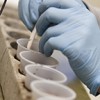 This document addresses the selection of soil nutrient extractants in high pH soils and discusses their relationship to both nutrition and fertilizer management. This document’s objective is to describe the impact of selected soil extractants on nutrient management and their ability to determine soil phosphorus availability. The target audience for this series dealing with citrus nutrition includes Certified Crop Advisers; citrus, vegetable, and sugarcane producers; fertilizer dealers; and other parties interested in crop fertilization practices. This 4-page fact sheet was written by Kelly T. Morgan and Kamal Mahmoud, and published by the UF Department of Soil and Water Science, December 2014.
This document addresses the selection of soil nutrient extractants in high pH soils and discusses their relationship to both nutrition and fertilizer management. This document’s objective is to describe the impact of selected soil extractants on nutrient management and their ability to determine soil phosphorus availability. The target audience for this series dealing with citrus nutrition includes Certified Crop Advisers; citrus, vegetable, and sugarcane producers; fertilizer dealers; and other parties interested in crop fertilization practices. This 4-page fact sheet was written by Kelly T. Morgan and Kamal Mahmoud, and published by the UF Department of Soil and Water Science, December 2014.
http://edis.ifas.ufl.edu/ss613
Effect of Fertilizer Phosphorus Rate of Tomato and Green Bean Yield and Growth in High pH Sandy Soils of South Florida
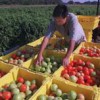 This 4-page fact sheet addresses the effect of phosphorus rate on tomato and green bean yield and growth in high pH soils and discusses their relationship to both nutrition and fertilizer management. Written by Kelly T. Morgan and Kamal Mahmoud, and published by the UF Department of Soil and Water Science, December 2013.
This 4-page fact sheet addresses the effect of phosphorus rate on tomato and green bean yield and growth in high pH soils and discusses their relationship to both nutrition and fertilizer management. Written by Kelly T. Morgan and Kamal Mahmoud, and published by the UF Department of Soil and Water Science, December 2013.
http://edis.ifas.ufl.edu/ss611
Effect of Reduced Soil pH with Sulfur on Available Soil Phosphorus in High pH Sandy Soils of South Florida
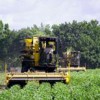 This 3-page fact sheet addresses the effect of moderating soil pH by using sulfur amendments in high pH soils and discusses their relationship to both nutrition and fertilizer management. Written by Kelly T. Morgan and Kamal Mahmoud, and published by the UF Department of Soil and Water Science, December 2013.
This 3-page fact sheet addresses the effect of moderating soil pH by using sulfur amendments in high pH soils and discusses their relationship to both nutrition and fertilizer management. Written by Kelly T. Morgan and Kamal Mahmoud, and published by the UF Department of Soil and Water Science, December 2013.
http://edis.ifas.ufl.edu/ss612
Smartirrigation Apps: Urban Turf
 We developed an app called Smartirrigation Turf to provide an easy-to-use mobile tool that delivers information to improve irrigation scheduling for urban turf. Using the app instead of a set time-based schedule for irrigation, homeowners and others can provide irrigation amounts to turf that more closely match water needs. This version of the app is applicable in Florida and Georgia and is available to download in the Apple App Store and Google Play Store. This 5-page fact sheet was written by K. W. Migliaccio, J. H. Debastiani Andreis, C. Fraisse, K. T. Morgan, and G. Vellidis, and published by the UF Department of Agricultural and Biological Engineering, October 2013.
We developed an app called Smartirrigation Turf to provide an easy-to-use mobile tool that delivers information to improve irrigation scheduling for urban turf. Using the app instead of a set time-based schedule for irrigation, homeowners and others can provide irrigation amounts to turf that more closely match water needs. This version of the app is applicable in Florida and Georgia and is available to download in the Apple App Store and Google Play Store. This 5-page fact sheet was written by K. W. Migliaccio, J. H. Debastiani Andreis, C. Fraisse, K. T. Morgan, and G. Vellidis, and published by the UF Department of Agricultural and Biological Engineering, October 2013.
http://edis.ifas.ufl.edu/ae499
An Introduction to Biochars and Their Uses in Agriculture
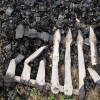 Biochar, also known as black carbon, is a product derived from organic materials rich in carbon and is found in soils in very stable solid forms, often as deposits. In recent years, considerable research has focused on biochar, its nature, and its properties to explore its potential benefits and negative impacts, particularly for applying to agricultural fields as amendments. This publication provides a general description of biochar, as well as technical details, benefits, and disadvantages of biochar for agricultural and environmental uses. This 4-page fact sheet was written by Rao Mylavarapu, Vimala Nair, and Kelly Morgan, and published by the UF Department of Soil and Water Science, August 2013.
Biochar, also known as black carbon, is a product derived from organic materials rich in carbon and is found in soils in very stable solid forms, often as deposits. In recent years, considerable research has focused on biochar, its nature, and its properties to explore its potential benefits and negative impacts, particularly for applying to agricultural fields as amendments. This publication provides a general description of biochar, as well as technical details, benefits, and disadvantages of biochar for agricultural and environmental uses. This 4-page fact sheet was written by Rao Mylavarapu, Vimala Nair, and Kelly Morgan, and published by the UF Department of Soil and Water Science, August 2013.
http://edis.ifas.ufl.edu/ss585
